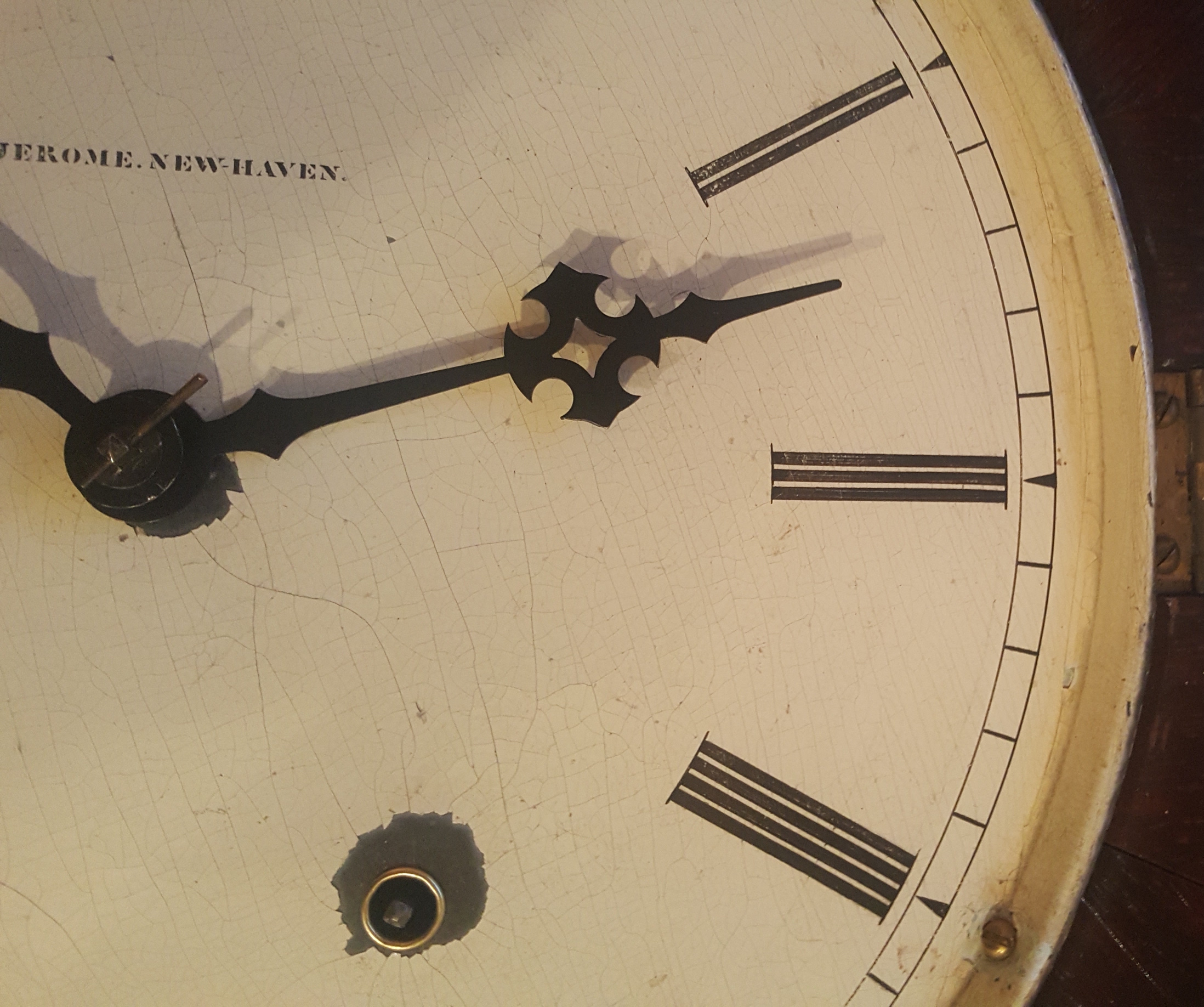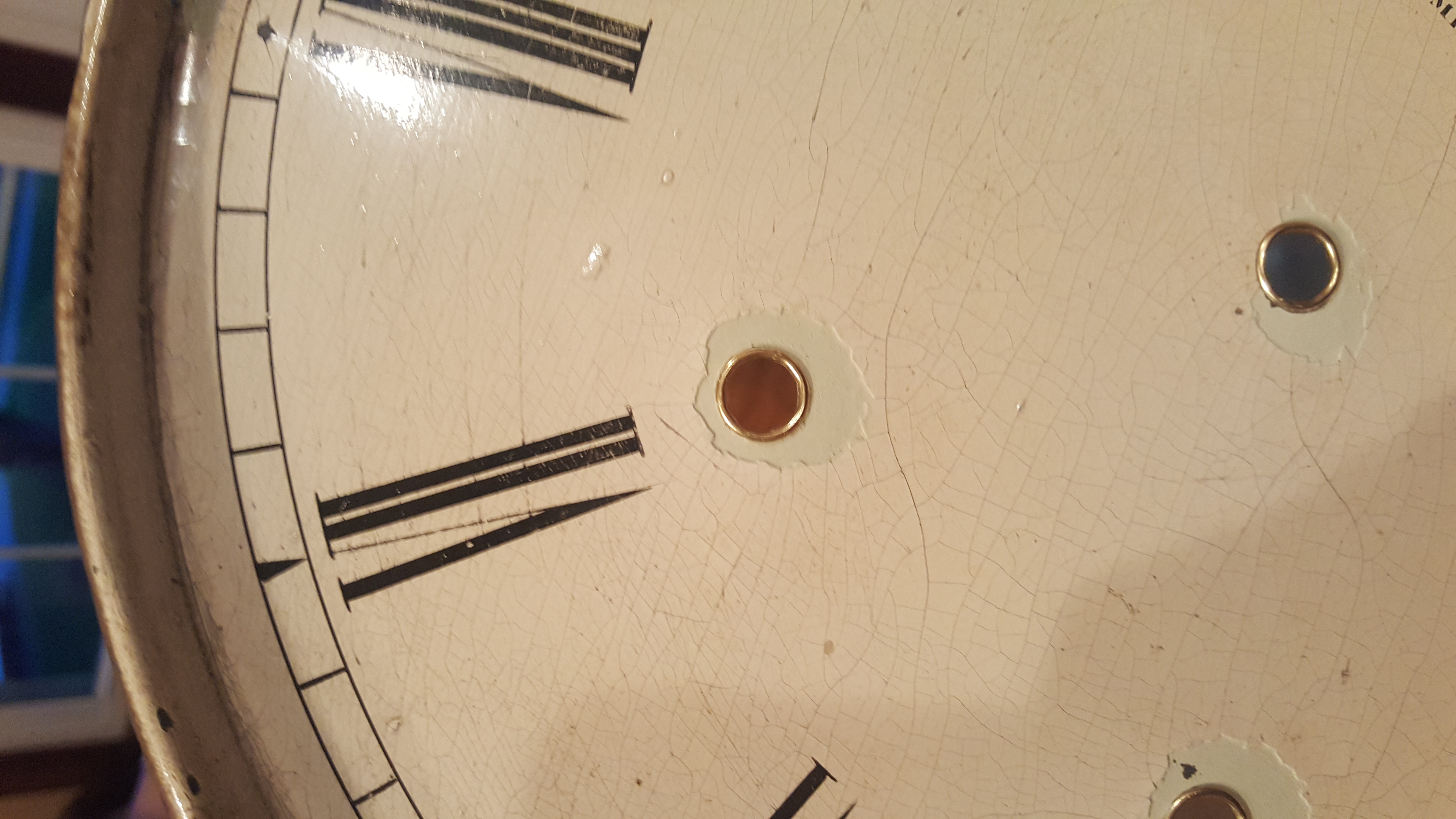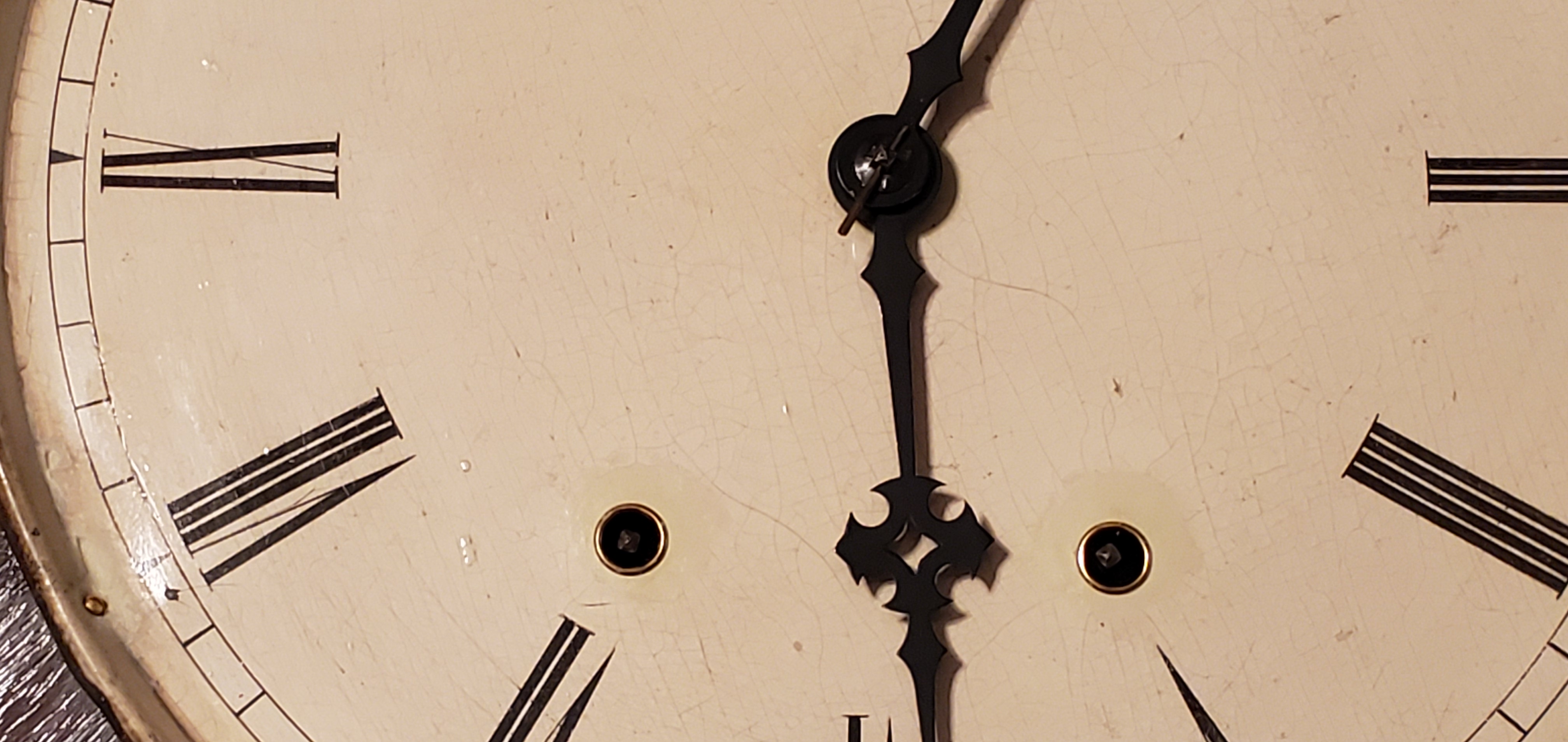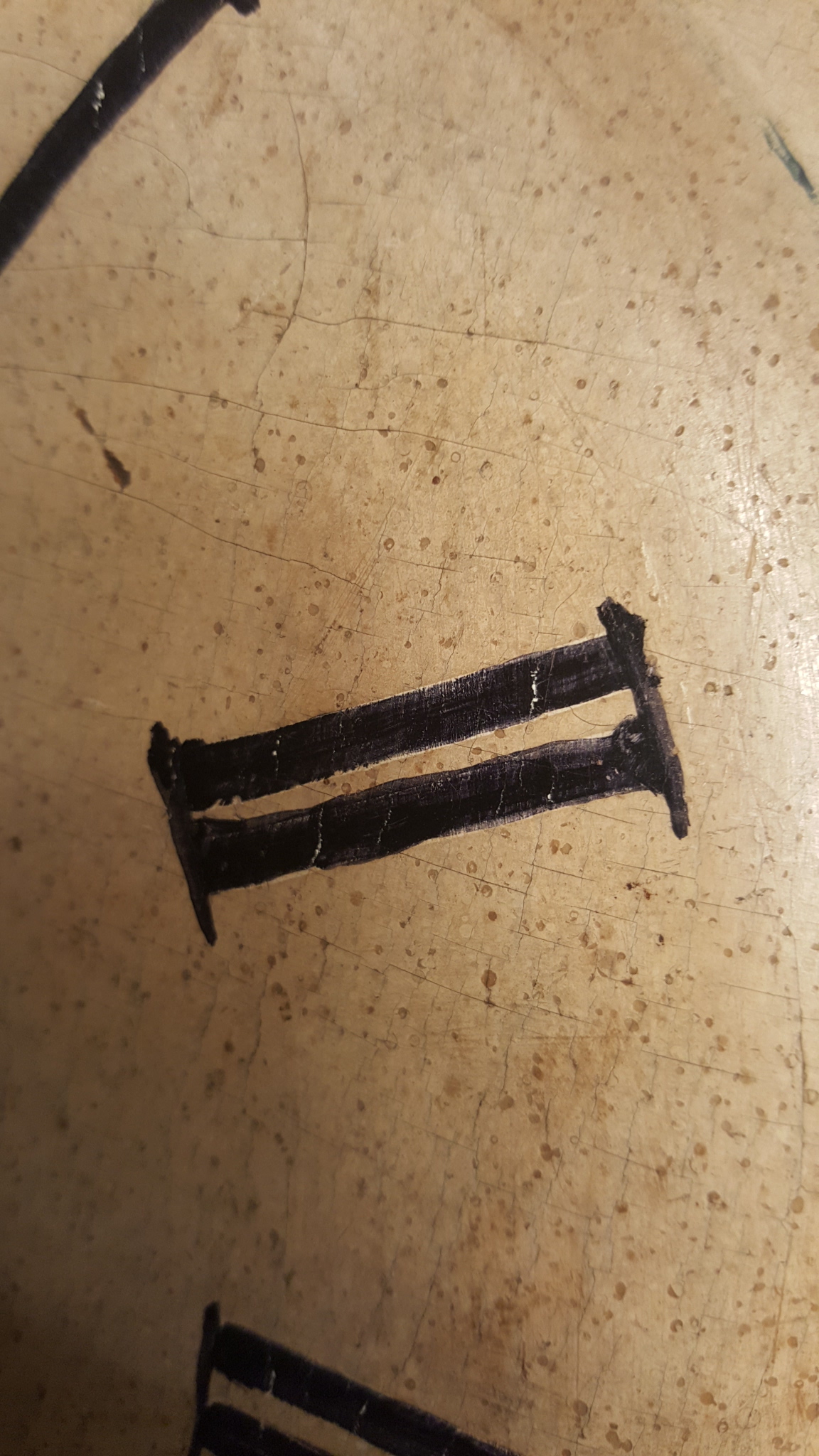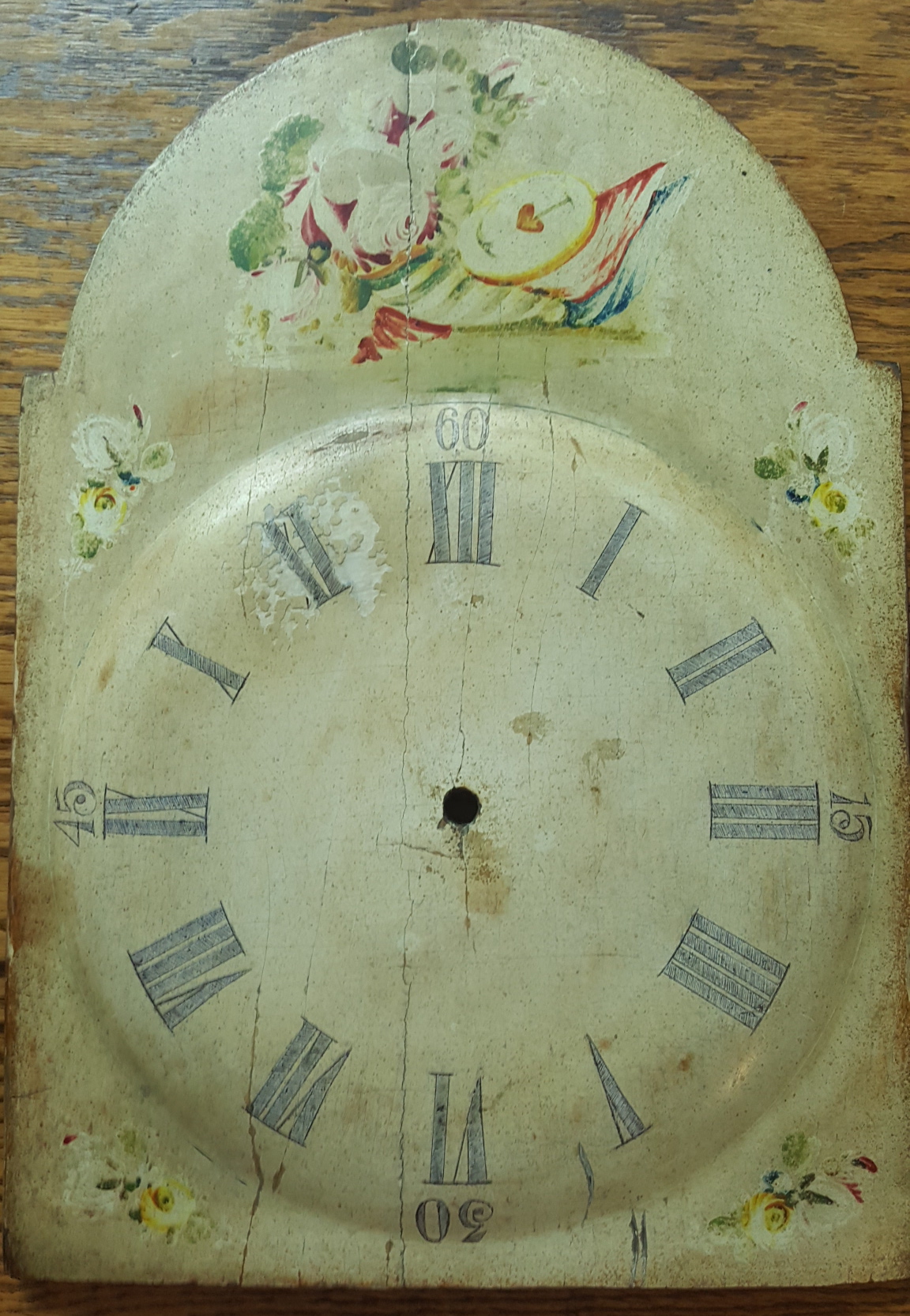As Found
This Seth Thomas Lincoln dial suffered partial flaking, mostly around the center section. The previous restoration attempt included trying to fill the missing sections with a body filler and then painting them with white paint.

As you can see in these detailed photos, the patching was poorly done and there was no attempt to blend the paint to match the surrounding faded sections of the dial that were still in otherwise good condition.
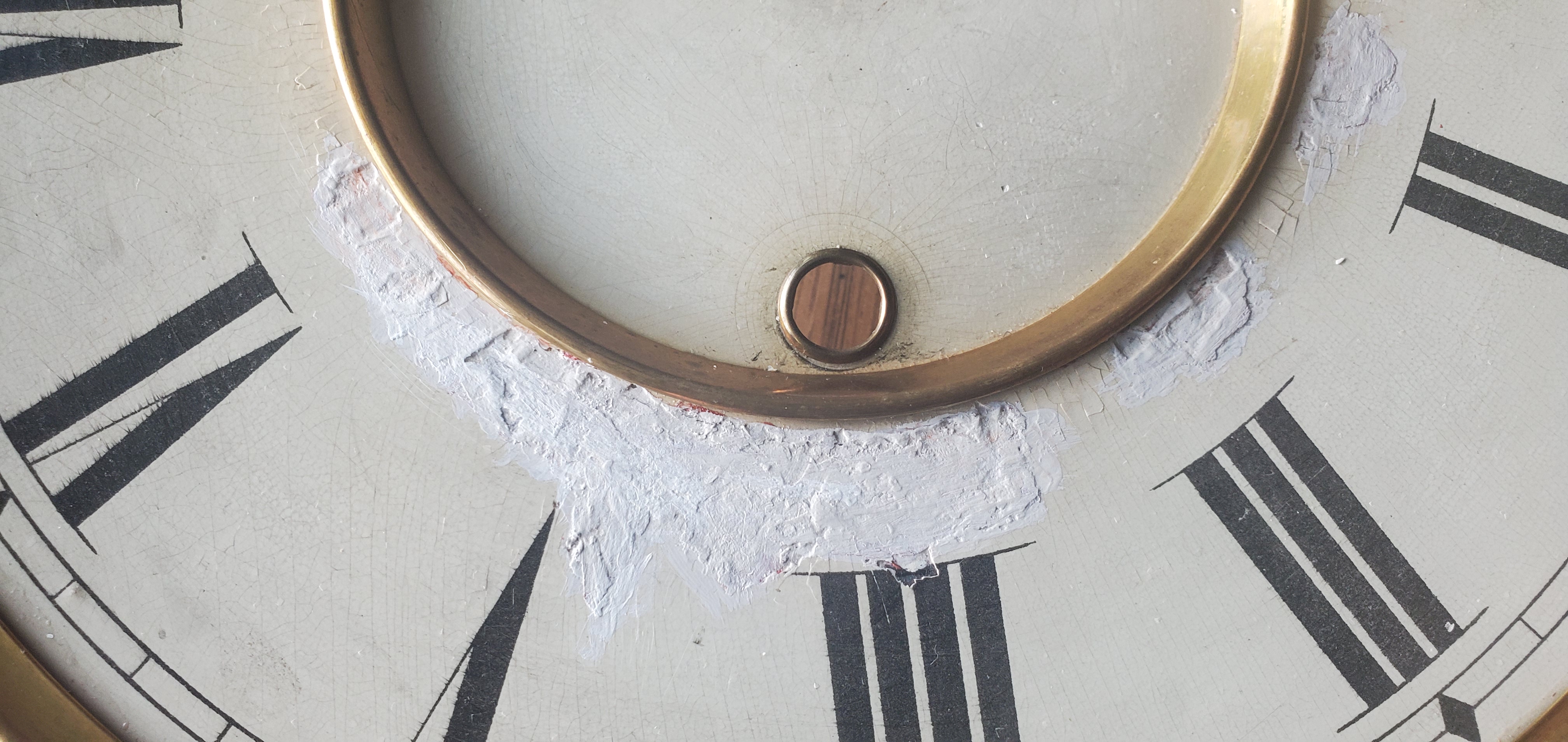
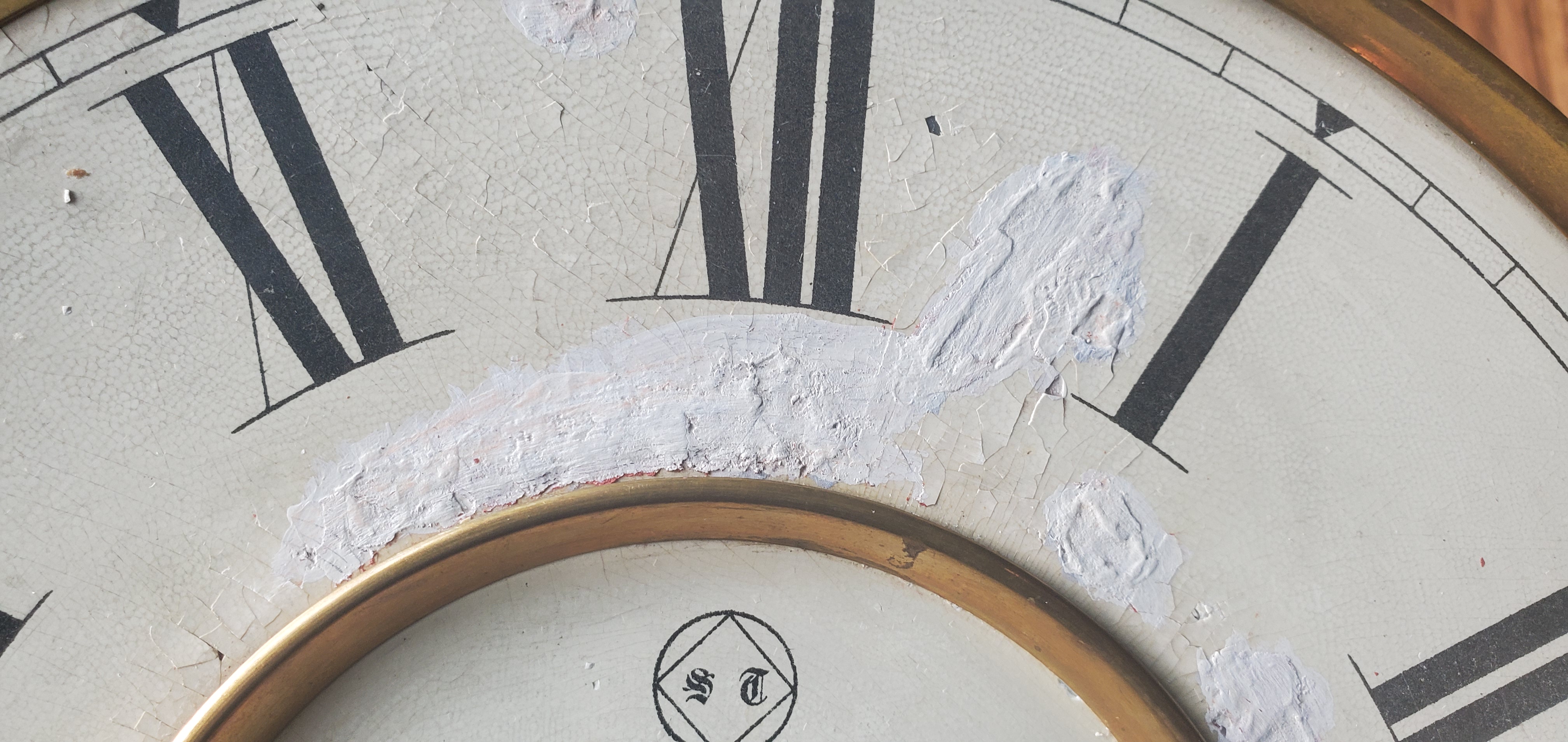
|
After Restoration
The first step required carefully removing the filler material without disturbing any of the original sections that remained in good condition.
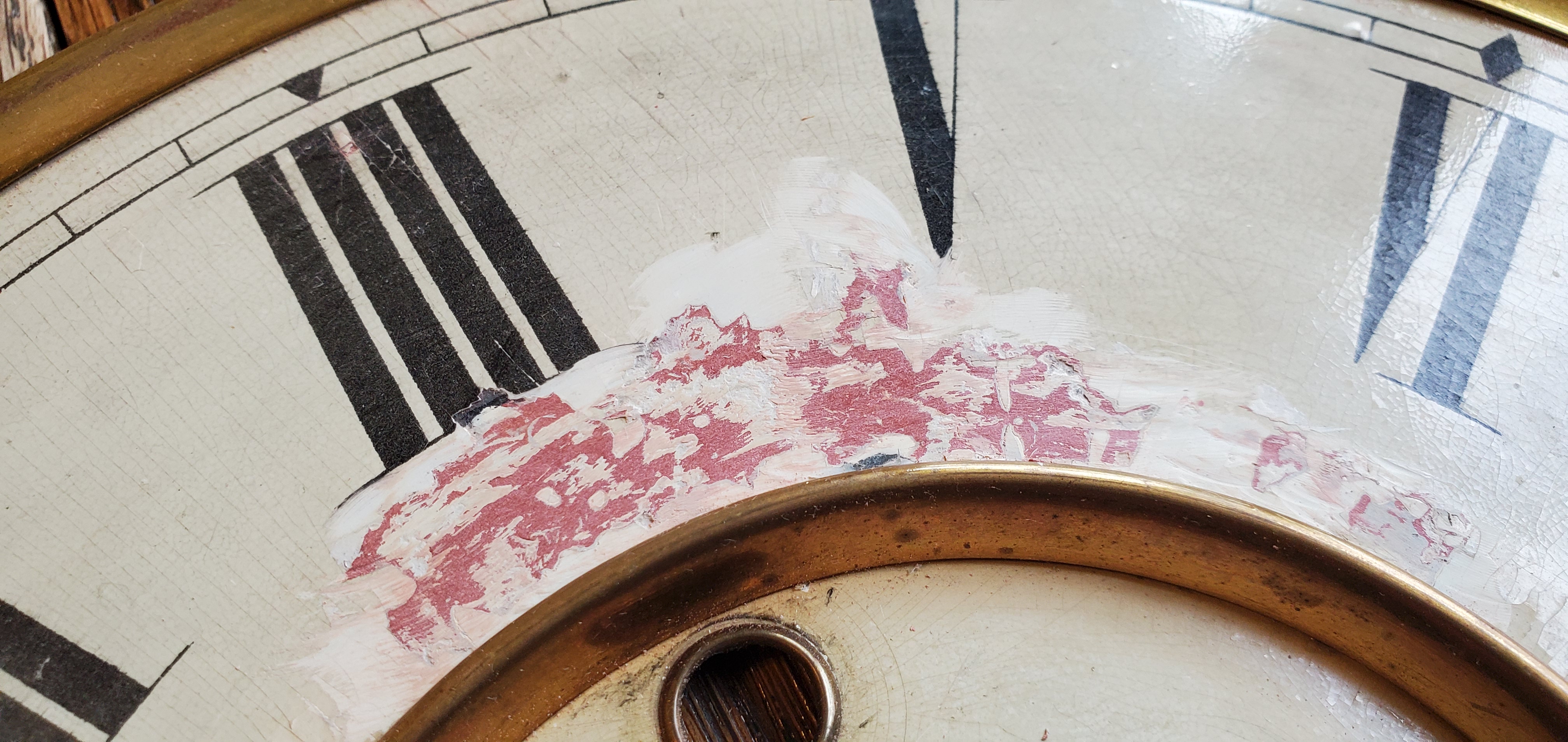
The next step was to restore the dial to a smooth and even surface. Areas that showed original cracking, but no significant deterioration were preserved and not made to look like new. You can see this between the 10 and 11. This photo was taken mid-process. Thin layers were added gradually to build up the surface to look as close as possible to the original.
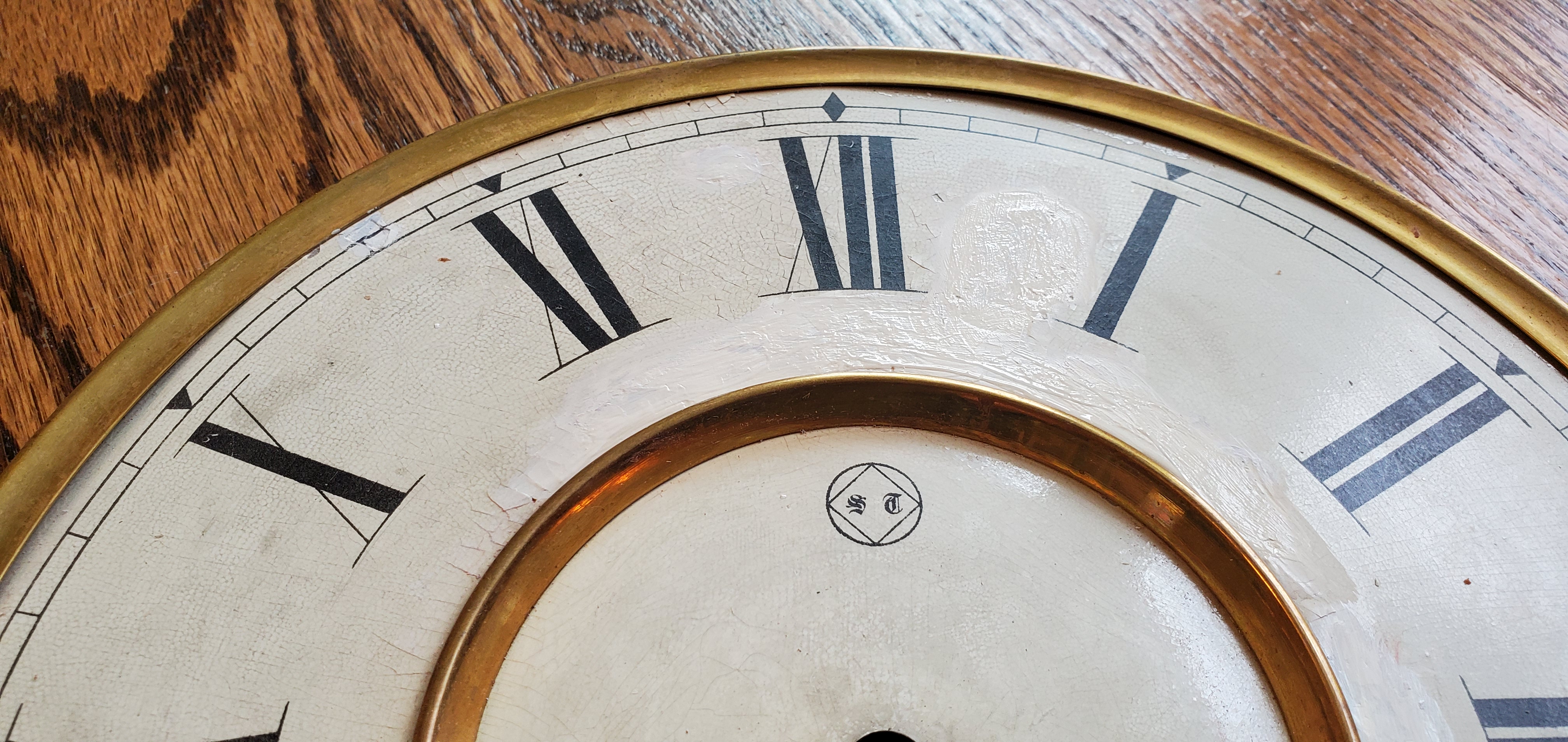
After the surface was restored, the color was blended to match the dial's variations using several colors so there were no areas of sharp contrast between adjoining areas.
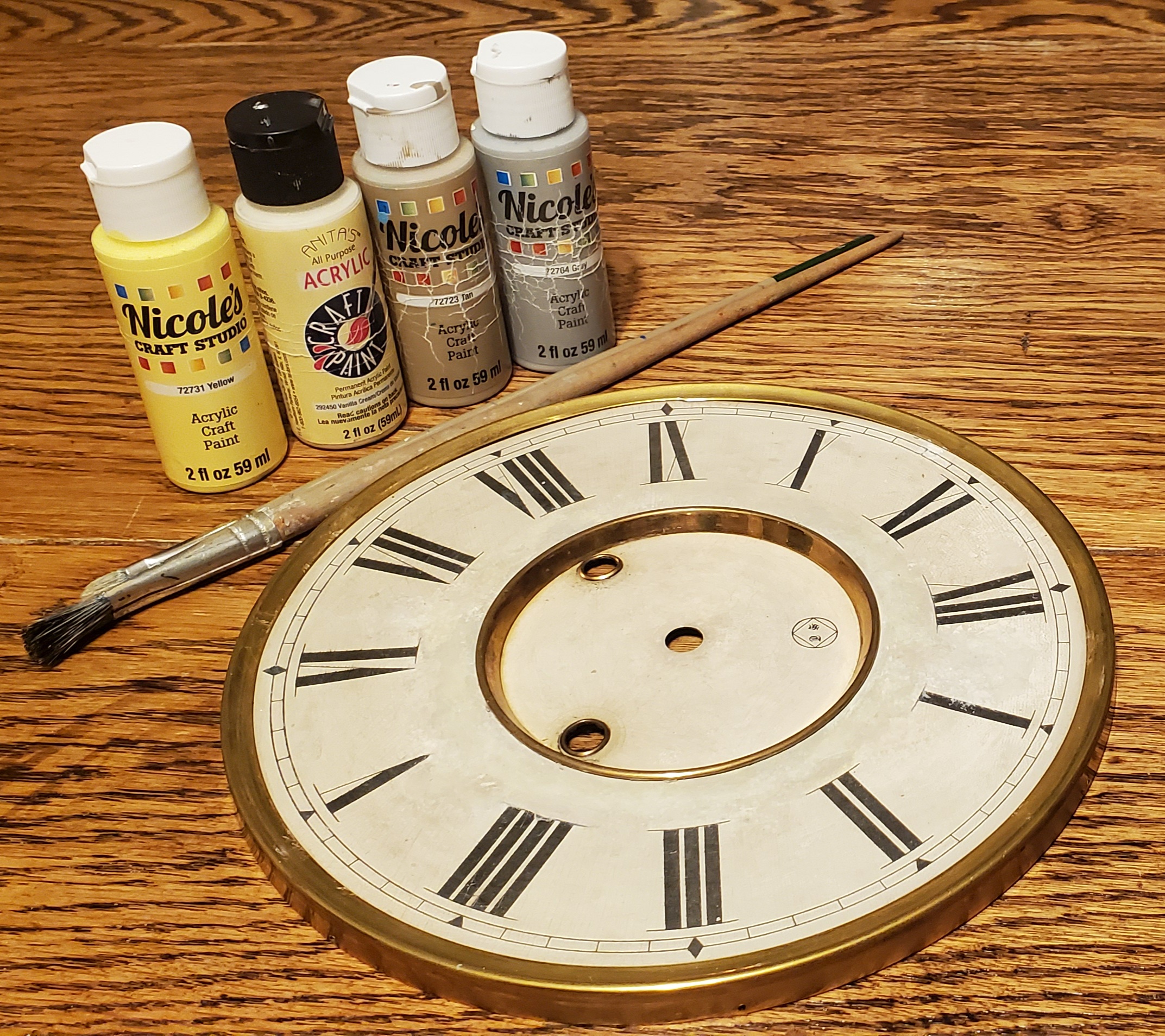
Color matching is a slow repetitive process requiring a keen eye and ability to select or blend the best color, or as in this case multiple colors. This photo shows a self critique of areas that needed improvement.
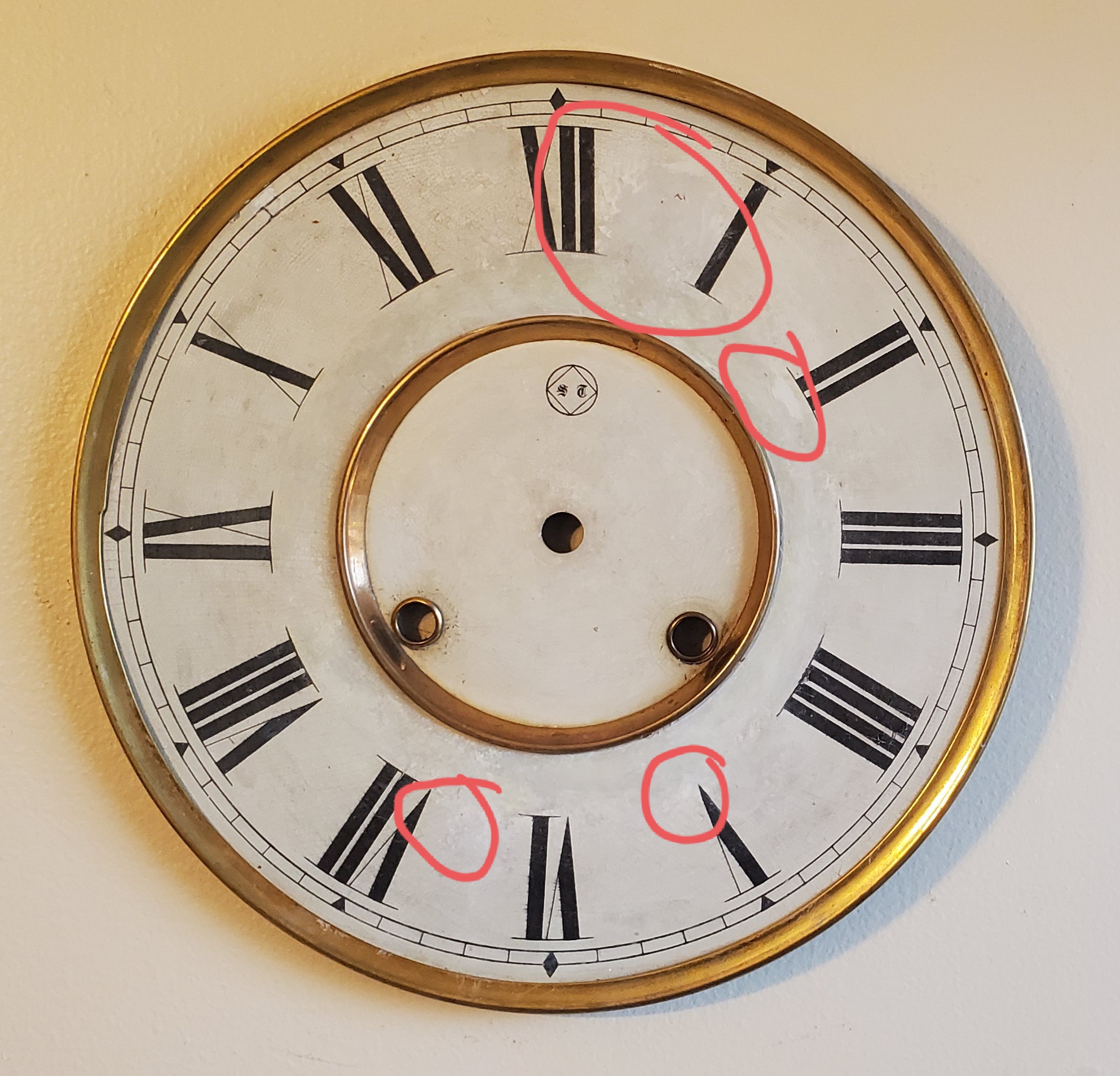
After color matching, the process is still not complete. As you can see here, the surface finish and sheen look dramatically different under different lighting conditions even though the colors had been matched very well at this point.
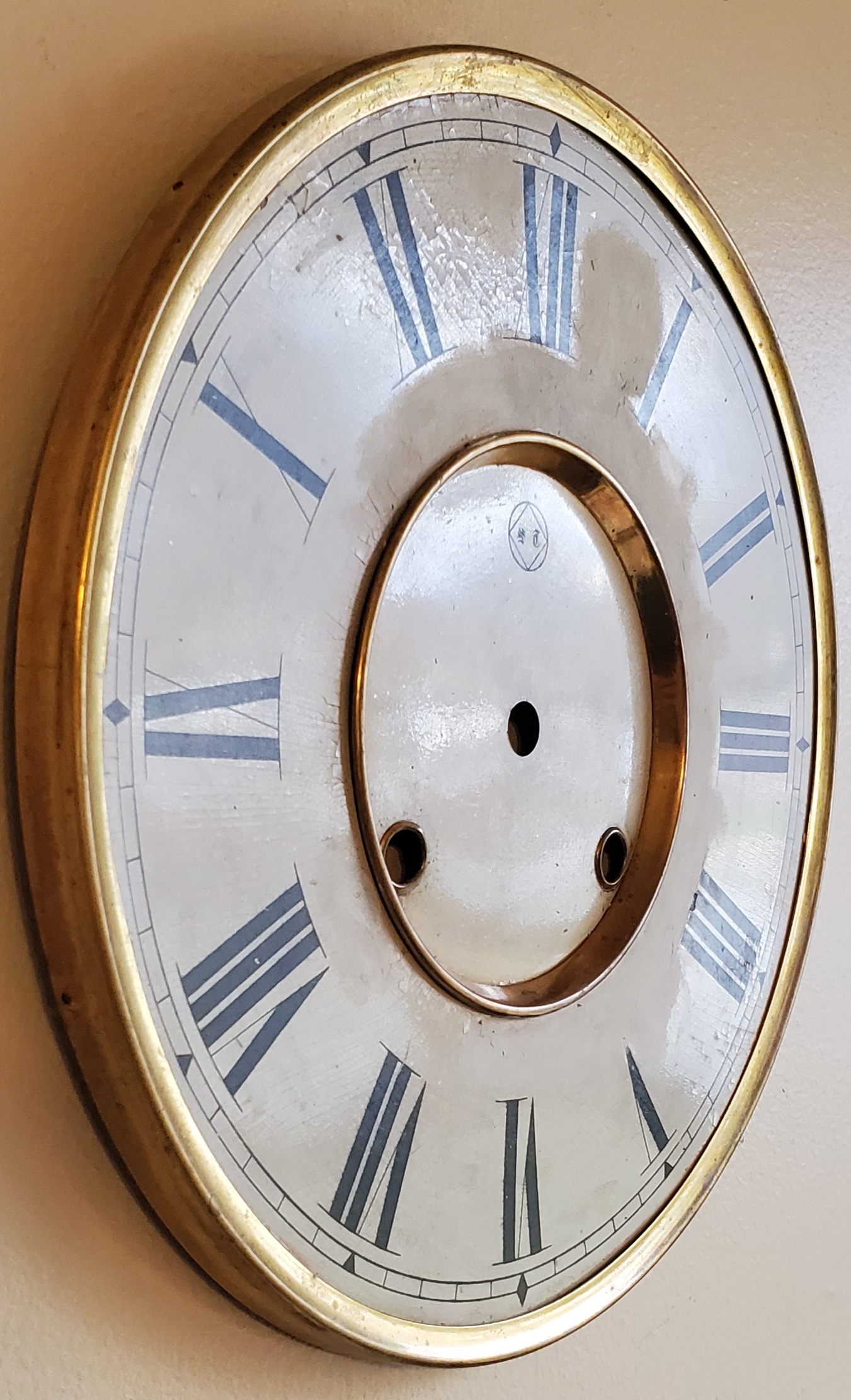
The final result, showing the dial from several angles and after restoring the details to some of the numbers.
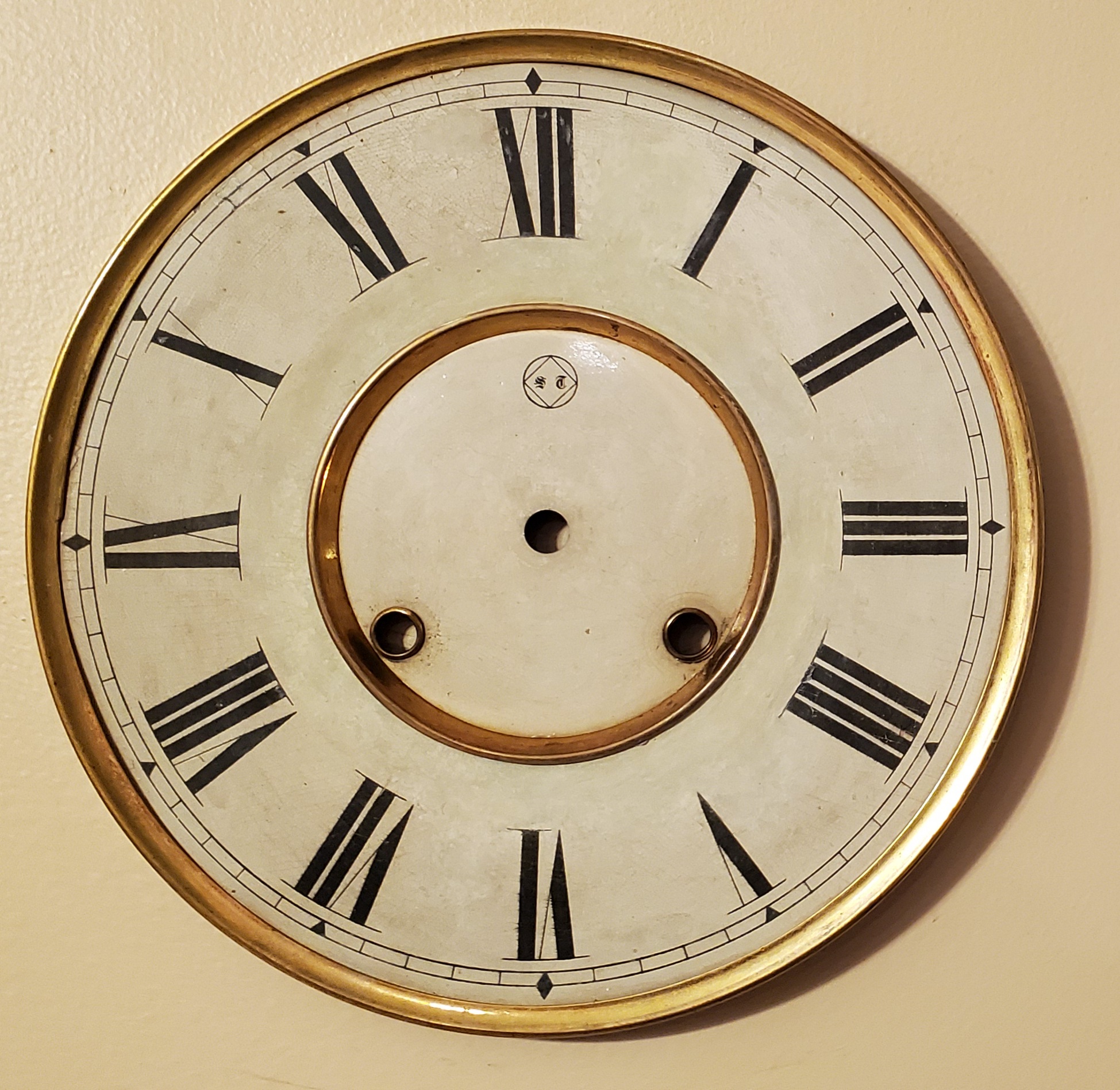
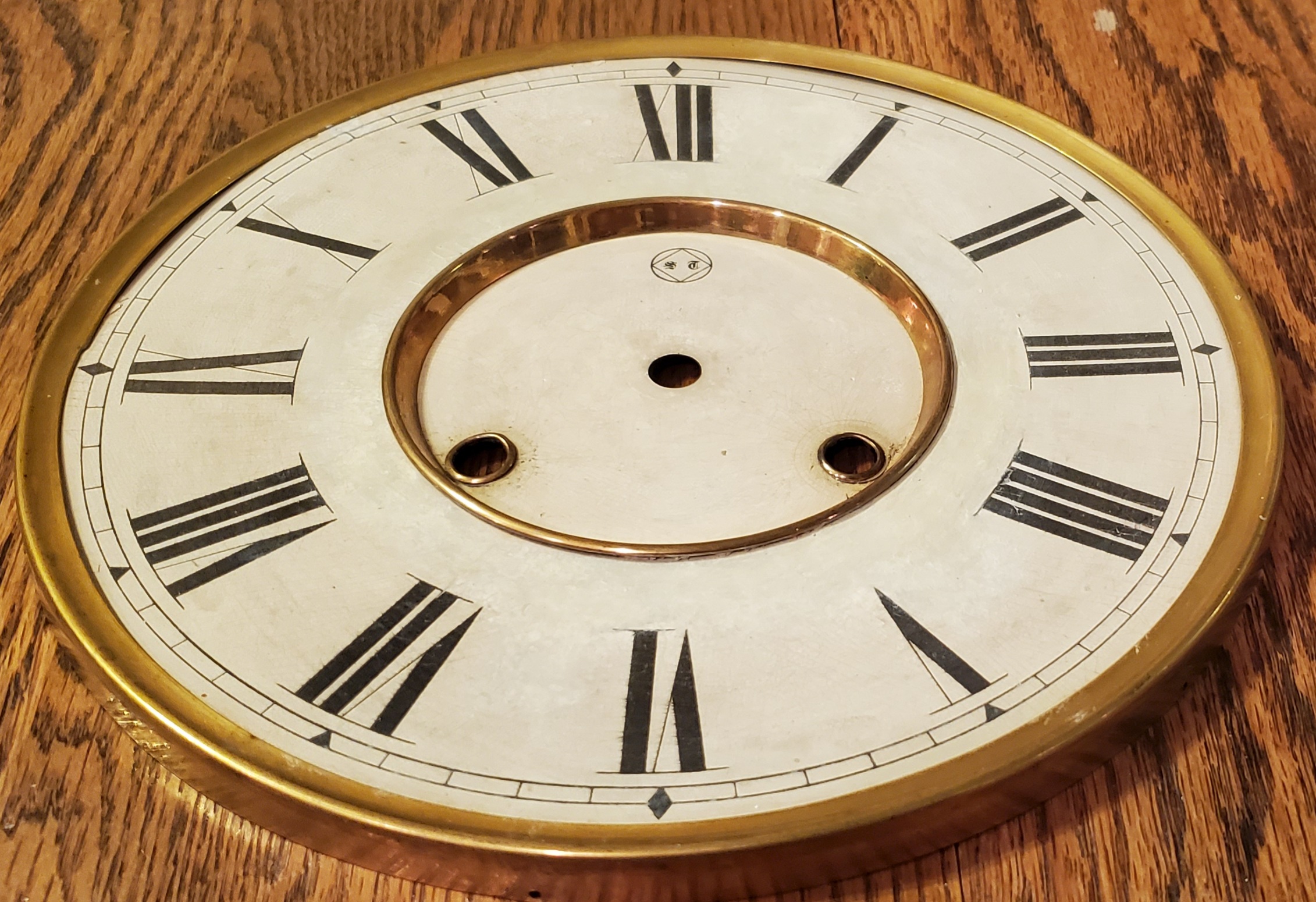
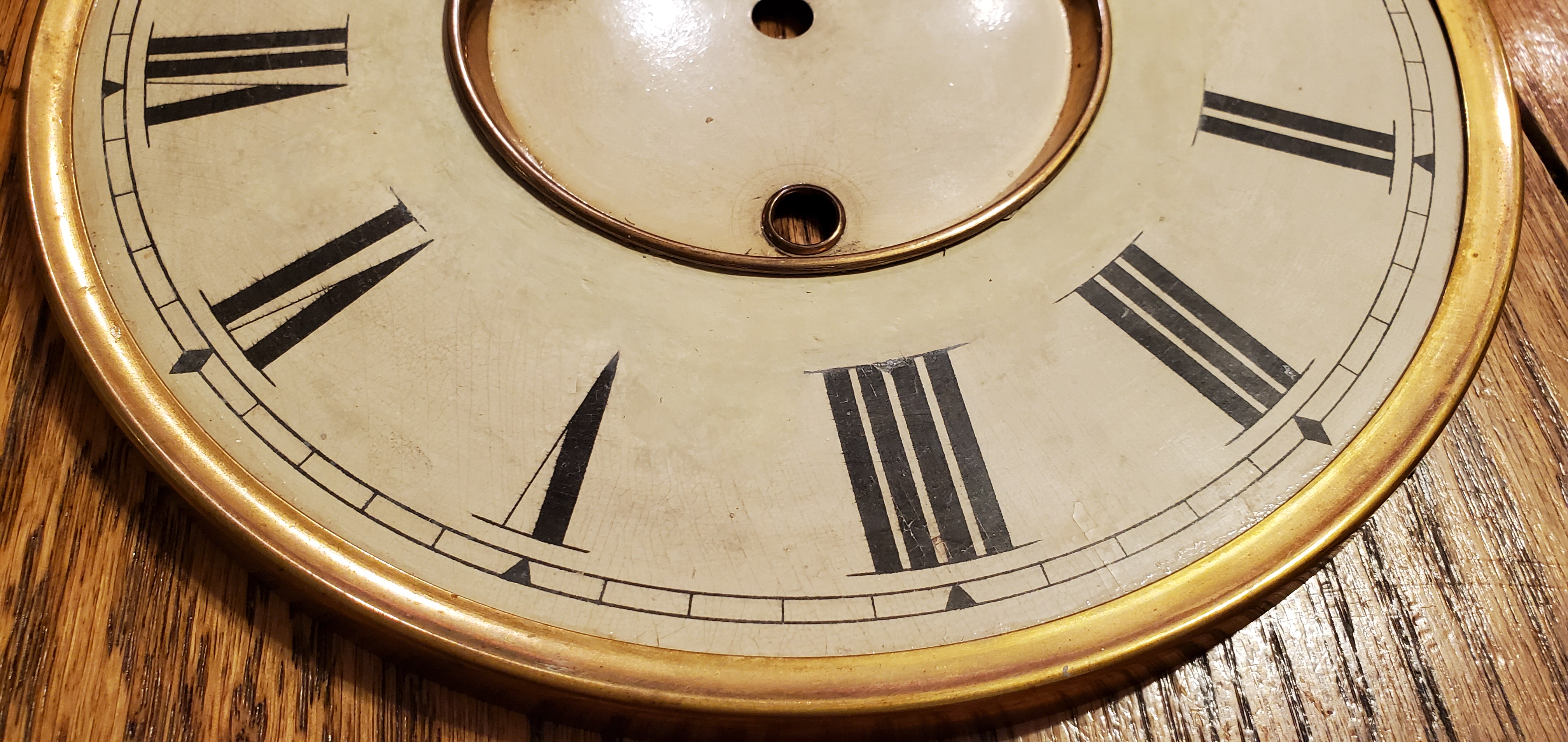
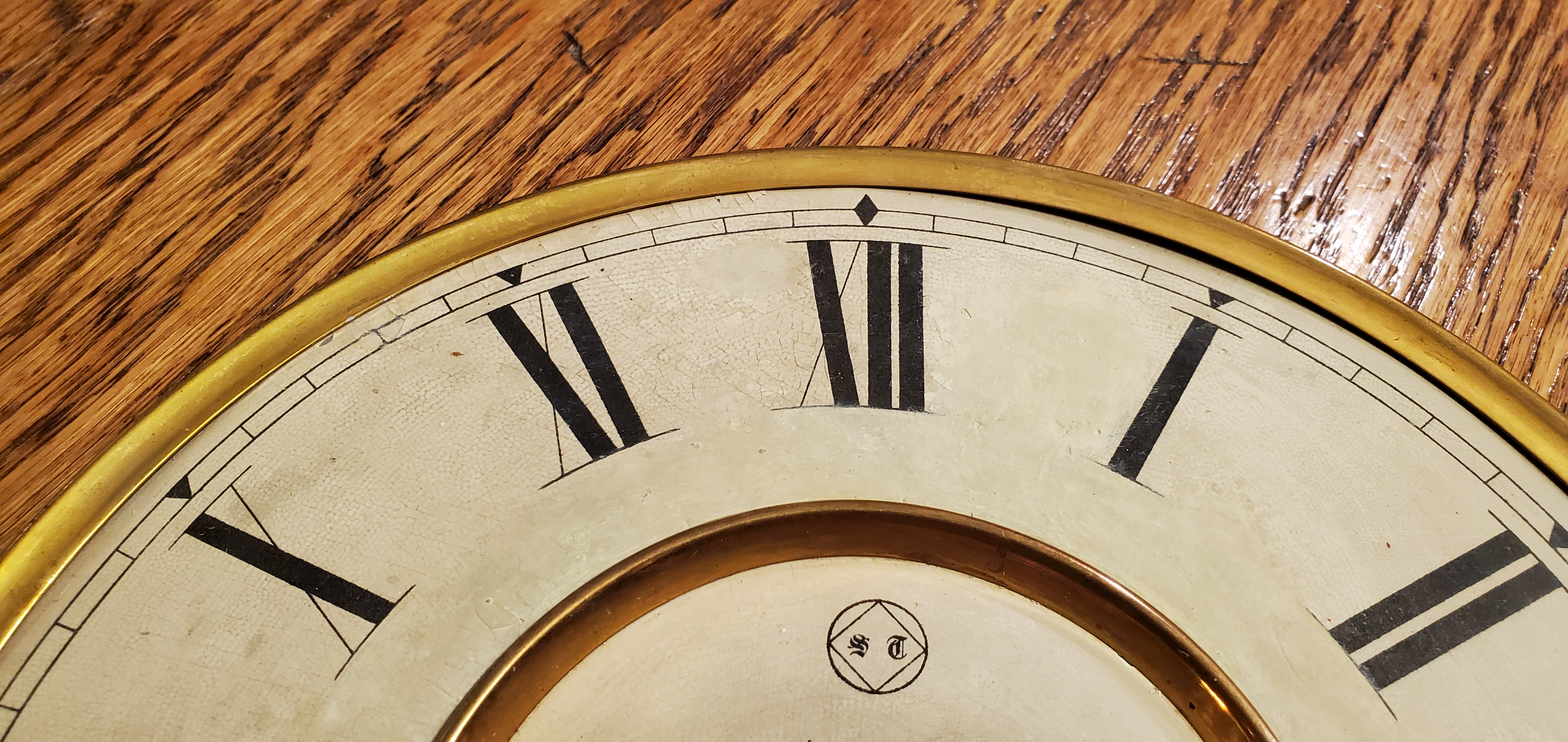
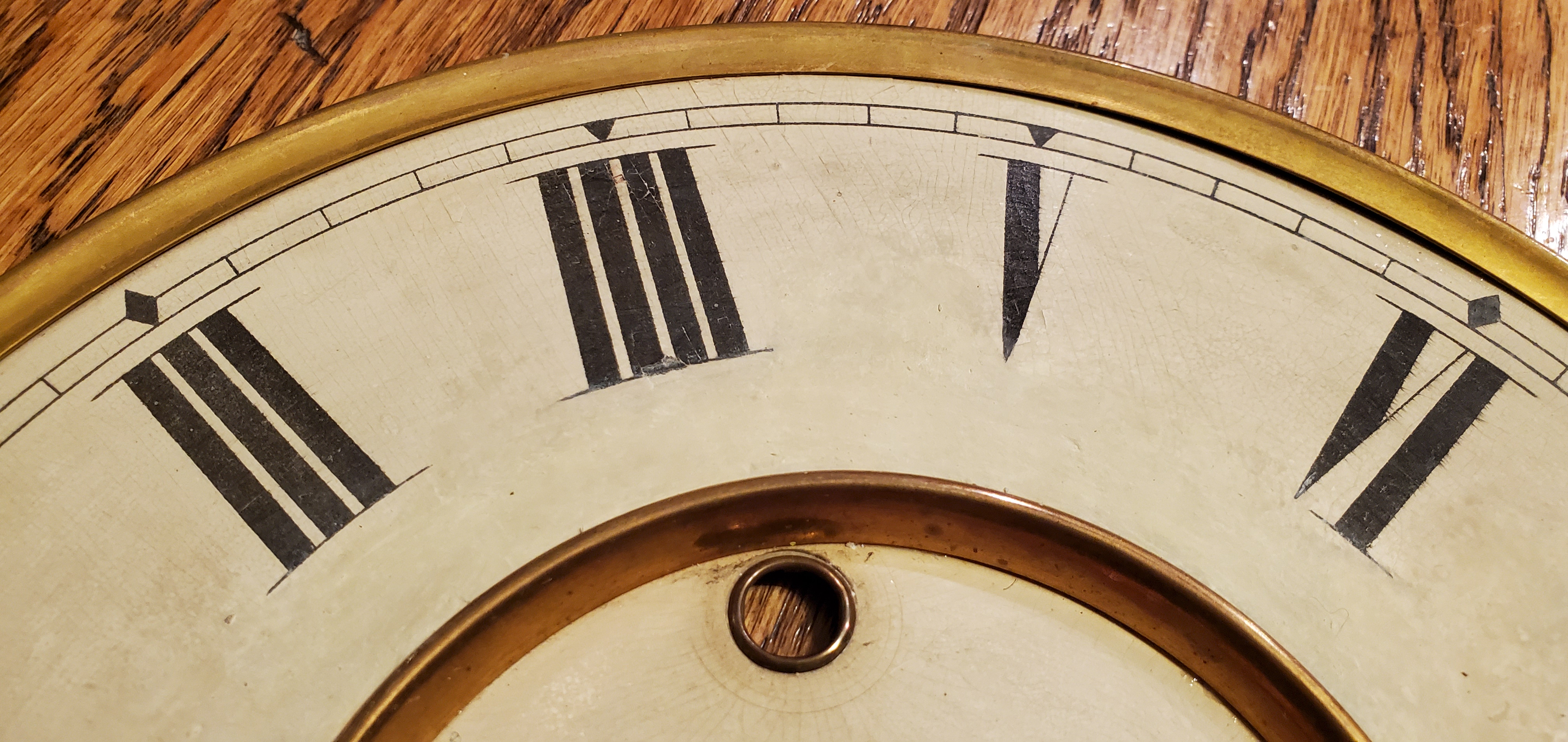
|

















